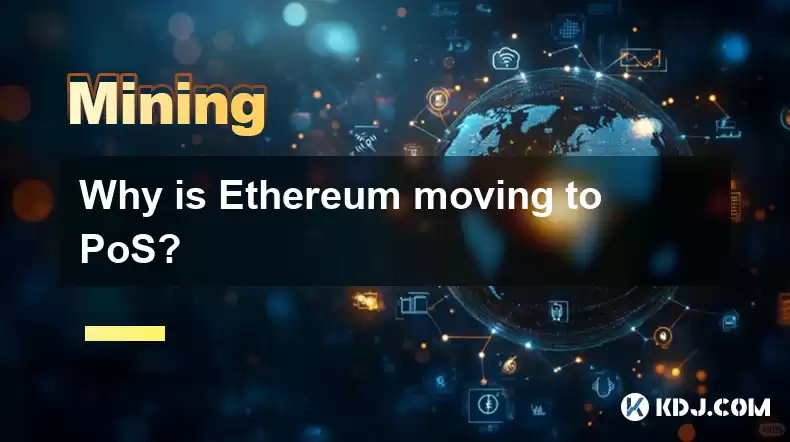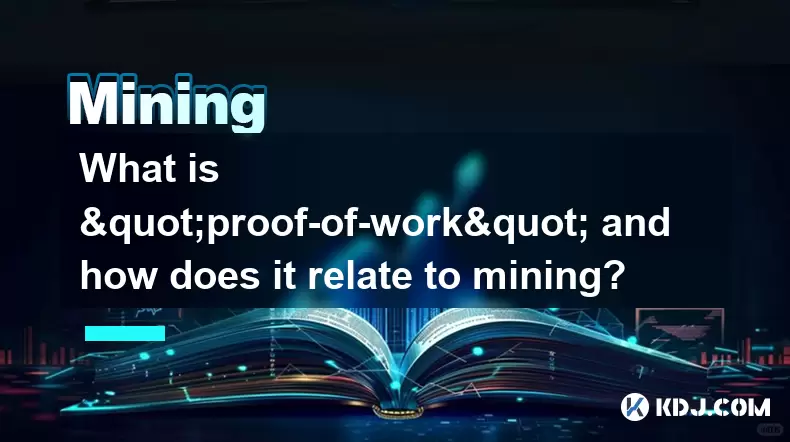-
 Bitcoin
Bitcoin $116400
-0.36% -
 Ethereum
Ethereum $4033
3.40% -
 XRP
XRP $3.302
-1.26% -
 Tether USDt
Tether USDt $1.000
-0.02% -
 BNB
BNB $796.1
1.67% -
 Solana
Solana $177.8
1.89% -
 USDC
USDC $0.9999
0.00% -
 Dogecoin
Dogecoin $0.2314
4.09% -
 TRON
TRON $0.3381
0.14% -
 Cardano
Cardano $0.7989
1.22% -
 Stellar
Stellar $0.4496
-1.84% -
 Chainlink
Chainlink $20.42
9.42% -
 Hyperliquid
Hyperliquid $41.17
0.88% -
 Sui
Sui $3.914
3.77% -
 Bitcoin Cash
Bitcoin Cash $584.7
1.52% -
 Hedera
Hedera $0.2632
-0.54% -
 Avalanche
Avalanche $24.09
3.40% -
 Ethena USDe
Ethena USDe $1.001
-0.02% -
 Litecoin
Litecoin $123.2
1.33% -
 Toncoin
Toncoin $3.318
-0.04% -
 UNUS SED LEO
UNUS SED LEO $8.984
-0.05% -
 Shiba Inu
Shiba Inu $0.00001323
2.85% -
 Uniswap
Uniswap $10.90
4.41% -
 Polkadot
Polkadot $3.999
3.34% -
 Dai
Dai $1.000
0.01% -
 Cronos
Cronos $0.1630
9.64% -
 Bitget Token
Bitget Token $4.484
0.82% -
 Monero
Monero $272.4
2.44% -
 Pepe
Pepe $0.00001173
6.03% -
 Aave
Aave $290.8
2.88%
Why is Ethereum moving to PoS?
Ethereum's transition to Proof-of-Stake involves a multi-phased process, including the development of a PoS protocol, the implementation of a Beacon Chain, and the eventual "Merge" that will combine the Beacon Chain with the Ethereum mainnet.
Feb 24, 2025 at 05:48 pm

Key Points:
- Ethereum is a decentralized blockchain platform that has been transitioning from a Proof-of-Work (PoW) consensus mechanism to a Proof-of-Stake (PoS) mechanism.
- Proof-of-Work involves miners solving complex mathematical problems to validate transactions and secure the network, consuming a significant amount of energy.
- Proof-of-Stake, on the other hand, relies on validators staking their ETH to participate in the consensus process, reducing energy consumption and increasing transaction speed.
Steps Involved in Ethereum's Move to PoS:
1. Development of the PoS Protocol:
- Ethereum developers began working on the PoS protocol, called Casper, in 2014.
- Casper introduced a new consensus mechanism where validators stake their ETH to participate in transaction validation.
- The amount of ETH staked determines the validator's voting power and rewards.
2. Implementation of Phases 0 and 1:
- December 2020 marked the launch of Ethereum 2.0 Phase 0, introducing the Beacon Chain.
- The Beacon Chain is a separate blockchain that runs parallel to the existing Ethereum mainnet.
- It allowed users to stake their ETH and become validators for the new PoS system.
3. Implementation of Phase 1.5:
- Phase 1.5 included the introduction of light clients that allow users to interact with the Beacon Chain using less computational power.
- It also added support for crosslink communication between the Beacon Chain and shard chains.
4. The Merge:
- The Merge is a crucial step that will combine the Beacon Chain with the Ethereum mainnet.
- It will transition the entire Ethereum network to the PoS consensus mechanism.
- The Merge is expected to take place in two stages: Bellatrix and Paris.
5. Implementation of Sharding:
- Sharding is a technique that divides the Ethereum network into multiple smaller chains called shards.
- This allows transactions to be processed in parallel, significantly increasing network throughput.
- Sharding is still under development and is expected to be implemented in multiple phases.
6. Full Deployment of Ethereum 2.0:
- With sharding fully implemented, Ethereum 2.0 will feature a scalable, energy-efficient, and secure PoS blockchain.
- It will enable faster transaction speeds, lower gas fees, and increased network capacity.
FAQs:
Q: Why is Ethereum moving to PoS?
A: Ethereum is moving to PoS to improve scalability, reduce energy consumption, and enhance security. PoS is more energy-efficient than PoW and allows for the creation of new blocks faster.
Q: What are the advantages of PoS over PoW?
A: PoS consumes less energy, requires fewer computational resources, and provides higher transaction throughput than PoW. It also reduces the risk of centralization.
Q: What is the timeline for Ethereum's move to PoS?
A: Ethereum's transition to PoS is an ongoing process. The Beacon Chain was launched in December 2020, and the Merge is expected to take place in 2023. Sharding is expected to be implemented in multiple phases over several years.
Q: Will Ethereum 2.0 be backward compatible?
A: Yes, Ethereum 2.0 is designed to be backward compatible with the existing Ethereum network. Users can continue to use their ETH wallets and smart contracts on Ethereum 2.0.
Disclaimer:info@kdj.com
The information provided is not trading advice. kdj.com does not assume any responsibility for any investments made based on the information provided in this article. Cryptocurrencies are highly volatile and it is highly recommended that you invest with caution after thorough research!
If you believe that the content used on this website infringes your copyright, please contact us immediately (info@kdj.com) and we will delete it promptly.
- Shiba Inu (SHIB) in the Crypto Landscape: Community, Trends, and Future Outlook
- 2025-08-09 20:30:12
- Solana, Unilabs, and Social Trends: Decoding the Crypto Buzz
- 2025-08-09 21:10:12
- Dogecoin, Meme Coins, and Layer Brett: Chasing the Next 100x
- 2025-08-09 20:50:12
- Crypto Presales in 2025: Are They Set to Outperform Launches?
- 2025-08-09 20:55:15
- Solana, Cardano, and Shiba Inu: Navigating the Crypto Landscape Beyond the Hype
- 2025-08-09 21:15:27
- Lasers in Modern Warfare: Iron Beam and the Future of Defense
- 2025-08-09 20:30:12
Related knowledge

What is "proof-of-work" and how does it relate to mining?
Aug 07,2025 at 02:03pm
Understanding the Concept of Proof-of-WorkProof-of-work (PoW) is a consensus mechanism used in blockchain networks to validate transactions and secure...

What are the differences between mining on Windows vs. Linux?
Aug 06,2025 at 11:29pm
Overview of Cryptocurrency Mining PlatformsCryptocurrency mining involves using computational power to solve complex cryptographic puzzles and validat...

How to use an old computer for cryptocurrency mining?
Aug 07,2025 at 12:42pm
Understanding the Feasibility of Using an Old Computer for MiningUsing an old computer for cryptocurrency mining may seem outdated, but it is still te...

Can you mine cryptocurrency using solar power?
Aug 07,2025 at 12:00am
Understanding the Basics of Cryptocurrency MiningCryptocurrency mining involves validating transactions on a blockchain network by solving complex cry...

How to monitor your mining rig's temperature and stability?
Aug 09,2025 at 09:43am
Understanding the Importance of Temperature Monitoring in Mining RigsMaintaining optimal temperature levels in a mining rig is essential for long-term...

How to build a mining rig inside a PC case?
Aug 06,2025 at 11:01pm
Understanding the Basics of a Mining Rig in a PC CaseBuilding a mining rig inside a PC case involves transforming a standard computer chassis into a d...

What is "proof-of-work" and how does it relate to mining?
Aug 07,2025 at 02:03pm
Understanding the Concept of Proof-of-WorkProof-of-work (PoW) is a consensus mechanism used in blockchain networks to validate transactions and secure...

What are the differences between mining on Windows vs. Linux?
Aug 06,2025 at 11:29pm
Overview of Cryptocurrency Mining PlatformsCryptocurrency mining involves using computational power to solve complex cryptographic puzzles and validat...

How to use an old computer for cryptocurrency mining?
Aug 07,2025 at 12:42pm
Understanding the Feasibility of Using an Old Computer for MiningUsing an old computer for cryptocurrency mining may seem outdated, but it is still te...

Can you mine cryptocurrency using solar power?
Aug 07,2025 at 12:00am
Understanding the Basics of Cryptocurrency MiningCryptocurrency mining involves validating transactions on a blockchain network by solving complex cry...

How to monitor your mining rig's temperature and stability?
Aug 09,2025 at 09:43am
Understanding the Importance of Temperature Monitoring in Mining RigsMaintaining optimal temperature levels in a mining rig is essential for long-term...

How to build a mining rig inside a PC case?
Aug 06,2025 at 11:01pm
Understanding the Basics of a Mining Rig in a PC CaseBuilding a mining rig inside a PC case involves transforming a standard computer chassis into a d...
See all articles

























































































